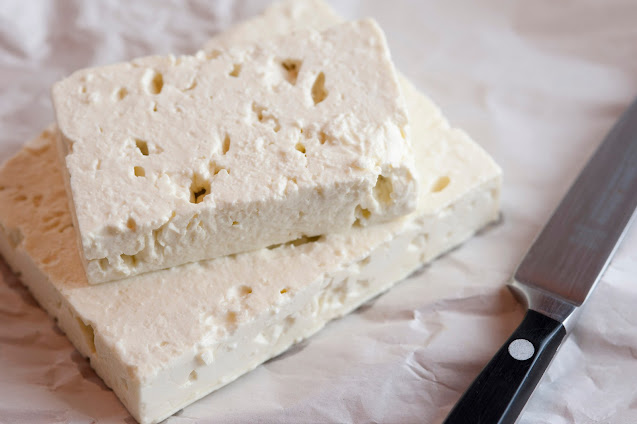When it comes to iconic cheeses, few can rival the distinct flavor and cultural significance of feta cheese. Hailing from the sunny shores of Greece, feta cheese has captured the hearts and taste buds of people around the world. Its crumbly texture, tangy taste, and versatility in various culinary creations have made it a beloved ingredient in numerous dishes. Join us as we embark on a journey to explore the richness of feta cheese and uncover its fascinating story.
Feta Cheese History
Feta cheese has a long and storied history that dates back thousands of years. Its origins can be traced to ancient Greece, where it was made using sheep's milk. The name "feta" itself is derived from the Greek word "fetta," meaning "slice" or "piece." Traditionally, feta cheese was made as a way to preserve excess milk, ensuring a source of nourishment during the winter months.
For centuries, feta cheese has been an integral part of Greek cuisine. It has been mentioned in various Greek texts and even made an appearance in Homer's epic poem, the Odyssey. In fact, feta cheese was such a crucial part of Greek culture that laws were enacted to protect its authenticity and regional origin. Having that in mind, feta is a Protected Designation of Origin (PDO) product. This means that only cheese made in some areas of Greece can be called “feta”.
Feta cheese is known for its unique characteristics that set it apart from other cheeses. It is made primarily from sheep's milk or a combination of sheep's and goat's milk. This blend of milk gives feta its distinctive tangy and slightly salty flavor.
One of the defining features of feta cheese is its crumbly texture. When sliced, it tends to break apart rather than melt, making it a popular choice for sprinkling over salads, pastries, and baked dishes. The cheese is typically aged in brine, which contributes to its tanginess and helps preserve its freshness.
Feta's Culinary Uses
Feta cheese's versatility in the kitchen is one of its greatest assets. Its tangy flavor adds a delightful kick to a wide range of dishes. Here are a few popular culinary uses for feta cheese:
- Salads: Feta cheese pairs wonderfully with fresh, crisp vegetables in salads. Its briny flavor complements the sweetness of tomatoes, the crunch of cucumbers, and the earthiness of olives. This is why it is an essential ingredient of the Greek village salad.
- Pastries and Bread: Feta cheese can be incorporated into pastries such as spanakotiropita, a Greek spinach and cheese pie. And don't forget the famous tiropita! It also works well as a filling for stuffed bread or as a topping for flatbreads such as tiropsomo.
- Dips and Spreads: Feta cheese can be blended with herbs, olive oil, and spices to create delicious dips and spreads. Tirosalata and tirokafteri, Greek feta dips, are popular examples.
Health Benefits
Apart from its delightful taste and culinary uses, feta cheese also offers some health benefits. It is a good source of protein and calcium, which are essential for maintaining healthy bones and muscles. Feta cheese is also relatively low in calories compared to some other cheeses, making it a suitable option for those watching their calorie intake.
Feta cheese, like other dairy products, can offer several health benefits when consumed as part of a balanced diet. Here are some potential health benefits associated with feta cheese:
- Nutritional Value: Feta cheese is a good source of essential nutrients, including protein, calcium, phosphorus, and vitamins like vitamin B12. Protein is crucial for building and repairing tissues, while calcium and phosphorus are important for strong bones and teeth.
- Bone Health: The calcium content in feta cheese contributes to maintaining healthy bones and reducing the risk of osteoporosis, a condition characterized by weak and brittle bones. Adequate calcium intake, along with vitamin D, exercise, and a balanced diet, can help support bone health.
- Probiotics: Feta cheese is traditionally made from fermented milk, which undergoes a process involving lactic acid bacteria. These bacteria can have probiotic properties, promoting a healthy gut microbiome. Probiotics may help support digestion, boost the immune system, and improve overall gut health.
- Lower in Calories: Compared to some other cheeses, feta cheese is relatively lower in calories. This can be beneficial for individuals who are mindful of their calorie intake or are following a weight management plan. However, moderation is still key, as feta cheese does contain fat and sodium.
- Vitamins and Minerals: Feta cheese contains essential vitamins and minerals, including vitamin B12, which is important for the production of red blood cells and the functioning of the nervous system. It also provides phosphorus, necessary for energy production and maintaining healthy cells.
- Source of Protein: Feta cheese is a good source of protein, which plays a crucial role in various bodily functions. Protein is essential for building and repairing tissues, supporting immune function, and producing enzymes and hormones.
It's important to note that individual dietary needs may vary, and it's always recommended to consult with a healthcare professional or registered dietitian for personalized advice based on your specific health conditions and goals. Additionally, portion control and moderation are key when incorporating any food into a balanced diet.
